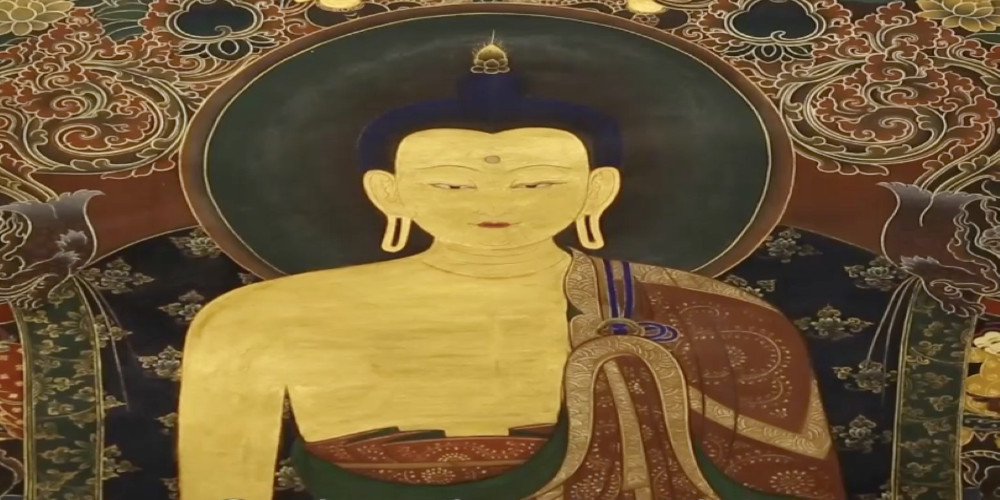Beijing, China: Seqinglamu is a 21-year-old woman from a remote part of the Tibetan plateau in China’s Sichuan Province. Along with another 59 peers, she recently celebrated their graduation ceremony after 8 years of intensive study at the Jonang Intangible Cultural Heritage Center, located in Rangtang county, Aba prefecture, Sichuan province.
Her graduation work, a piece of Jonang Thangka painting illustrating Sakyamuni Buddha has stunned professional art collectors. But Seqinglamu refuses to go commercial with her art. Instead she wants to develop further with her teacher, Jianyang Lezhu Rinpoche, who showed her the true value of Jonang Thangka.
Seqinglamu’s starting point is remarkably humble, having met a lot of obstacles on her journey. Born into a poor family of herders in one of the most remote and under-developed parts of China, Seqinglamu’s dreamed of studying and achieving something in life. She made it possible by later securing a place at the Rangtang Jonang Intangible Cultural Heritage Center where she learned the art of Jonang Thangka painting.
“Although our study of Jonang Thangka painting has come to an end, I still want to understand and study Jonang Thangka painting more deeply. I hope I can help others through painting; I always feel I should work harder, because this is my dream,” says Seqinglamu .
“There are unavoidable difficulties and obstacles in the process of learning. A Jonang Thangka has to be painted carefully. The movement of your fingers and your thoughts should work together” added Seqinglamu.
Seqinglamu’s story is revealed in the visually stunning “Changing Destiny: Jonang Thangka Painting Gives Student Her New Path”, a short documentary produced by BON Cloud about her class, the first to graduate from the Center. These pioneering graduates have drawn the attention of national and international media, putting the spotlight on the unique culture this region has to offer. Video- http://bit.ly/2F28CyW
Early Buddhist art emerged in India and Sri Lanka following the death of Gautama Buddha (563 B.C.E. to 483 B.C.E.). This original, formative period of Buddhist art was aniconic in character (avoiding direct representation of the human figure). However, around the first century C.E., following the Buddhist contact with Hellenistic culture in the Indo-Greek Kingdoms, an iconic period of Buddhist art began to flourish in India. The growth of Buddhist art, in turn, influenced the development of Hindu art.
From its original homeland of India, Buddhist art was transported to other parts of Asia and the world, adapting to local styles and norms in each new host country. Today, Buddhist art constitutes an important part of overall Buddhist cultural legacy.
Thangka paintings
Thangkas are Tibetan Buddhist scroll artworks painted onto cotton or silk. These religious paintings can be traced back to the tenth century A.D. and typically depict a Buddhist deity, scene, or mandala. Jonang Thangka art has been growing in the Tibetan areas of Sichuan in recent years. It is regarded as having the highest artistic value among all kinds of Thangkas. The Jonang school masters and monks came from Tibet to the Rangtang area of Sichuan during the Qing dynasty. Secluded from the world, they passed down their unique art form for several centuries.
About Bon-Cloud – www.bon-cloud.com
BON Cloud is a China content supply platform featuring stories from Chinese cities and organizations, encompassing topics such as travel, CSR, the arts, business, and technology. BON Cloud invites publishers and broadcasters from around the world to bid to publish China content for profit.

